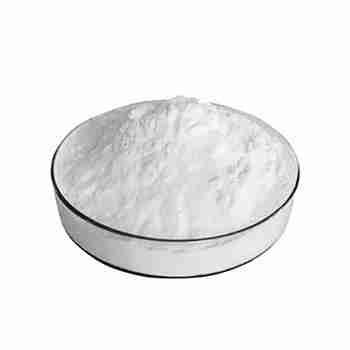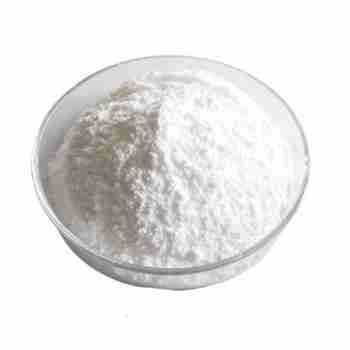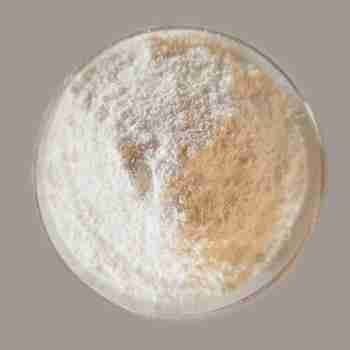Lysozyme CAS 12650-88-3
Enzymatic Activity: ??2,000000u/g
Appearance: yellow or white powder
Capacity: 50tons/month
Packaging: 25kgs/drum
Sample: available
related documents:
COA of Lysozyme CAS 12650-88-3
TDS of Lysozyme CAS 12650-88-3
Request for product documents
发送询盘
Description
Lysozyme Quick Details
Name: Lysozyme
CAS: 12650-88-3
Molecular Formula:C125H196N40O36S2
Molecular weight : 2899.27014
EINECS??235-747-3
Appearance:yellow or white powder
Chemical Structure??
Lysozyme Typical Properties
TEST ITEMS
STANDARDS
RESULTS
Appearance
Powder
PASS
Colour
Light
yellow
or
white
PASS
Odour
Normal fermentation odour
PASS
Loss on Drying %
??8.0
4.9
Particle Size(Passing?through 0.4mm sieve) %
??80
85
Enzymatic Activity
u/g
??2,000000
2,112000
Heavy Metal (as Pb)
mg/kg
??5
0.08
Lead (in Pb)
mg/kg
??5
0.22
Arsenic (in As)
mg/kg
??3
0.12
Total viable count
cfu/mL
??50,000
1500
Coliforms
cfu/g
??30
Absent
E.coli
Absent /25 g or mL
Absent
Salmonella
Absent/25 g or mL
Absent
Mould
cfu/mL
??200
28
Yeast
cfu/mL
??200
30
Unit Definition:Activity is expressed by u/g , complies with the specifications of FCC and JEFCA.
Lysozyme Packing??
Packing:25kgs/drum,9tons/20??container with pallets
Lysozyme Application:
1)Application in medicine: it is widely used in biotechnology
2)Application in aquatic products and meat products: in view of the non-toxic and harmless characteristics of lysozyme, and the decomposition of G + cell wall, it is applied to aquatic products and meat products. On the premise of ensuring that the original nutritional components of food are not lost, can keep aquatic products and meat products fresh and antiseptic
3)Application in other foods: cream cake is one of the foods prone to spoilage. Adding lysozyme to cake can prevent spoilage caused by microorganisms; applying lysozyme to food preservation has obvious effect.
| 5 |
|
0 |
| 4 |
|
0 |
| 3 |
|
0 |
| 2 |
|
0 |
| 1 |
|
0 |
- 2
- 2-diallylpent-4-en-1-amine
- 4
- 95-16-9
- Ammonium sulfamate
- Benzothiazole
- cas:67889-00-3ح2
- cas:83524-75-8 | pigment black 32
- cas:928836-00-4 | 2
- cas:932745-70-5 | 4
- Chemical Minerals
- Coconut diethanolamide
- Daily Chemicals
- discount
- for sale
- General pvc resin
- hexyl D-glucoside
- in stock
- Lauramidopropyl betaine
- LAURIC ACID MONOETHANOLAMIDE
- Petroleum Additives
- Plasticiser
- Ploymers
- price
- PVC
- quotation
- Raw Materal
- Remove term: Petroleum Additives Petroleum Additive
- SODIUM ETHYL 2-SULFOLAURATE
Related Products
Common English name: 5-iodo-2,3-dihydropyridazin-3-one
CAS No.: 825633-94-1
Molecular formula: C4H3IN2O
Molecular weight: 221.98
Sample: Available
Chemical Name: Quercetin-3-O-sophoroside
CAS No.: 18609-17-1
Molecular Formula: C27H30O17
Molecular Weight: 626.52
Chemical Name: o-Xylene
Synonyms: 1,2-Dimethylbenzene; ortho-xylene
CAS No.: 95-47-6
Molecular Formula: C8H10
Molecular Weight: 106.17
Chemical Name: Potassium Castorate
CAS No.: 8013-05-6
Molecular Formula: C57H107K3O12
Molecular Weight: 1101.74718
Appearance: Yellow Liquid
Product name:Cyclopentane
Purity:96%
Appearance:White powder
Package:25kg/bag
Sample:Available
Chemical Name: Ashwagandha Extract
Synonyms: Withania somnifera, ext.; Withania Somnefera Extract
CAS: 90147-43-6
Appearance: Brown
Chemical Name: Zinc citrate
Synonyms: Zinc citrate trihydrate
CAS No.: 546-46-3
Molecular Formula: C6H8O7Zn
Molecular Weight: 257.5
Appearance: White powder
Hydroxyproline is a non-essential amino acid divided from another amino acid called proline. It is created by the communication of proline with ascorbic acid vitamin C. This process produces a hydroxyl team bound to a hydrogen-oxygen particle, which is affixed to a carbon particle of proline as well as converted to hydroxyproline.Trans-4-hydroxy-l-proline is an optically energetic form of 4-hydroxyproline with l-trans setup. It can be used as human metabolite, plant metabolite and also computer mouse metabolite. It is an tautomer of trans-4-hydroxy-l-proline zwitterions.
Chemical Name: beta-NADH disodium salt
Other name: beta-Nicotinamide adenine dinucleotide disodium salt
CAS No.: 606-68-8
Molecular Fomula: C21H30N7NaO14P2
Molecular weight:?689.44
Appearance:?white to light yellow powder
Assay: 95%min
Polyglutamic acid (CAS 25513-46-6) is usually in the form of white powder.
Polyglutamic acid is a high molecular compound with good water solubility and biocompatibility.
It has many excellent properties, such as water retention, plant growth promotion, and improved fertilizer utilization. In the agricultural field, it can be used as a fertilizer enhancer, water retainer, etc., which helps to improve the fertility and water retention capacity of the soil and promote the growth and development of crops. For example, adding it to fertilizer can reduce fertilizer loss and improve the effect of fertilizer.
In the field of cosmetics, polyglutamic acid is also used, because its moisturizing properties can be used in skin care products.
Copper acetate peptide, also known as blue copper peptide. Copper peptide, also known as tripeptide in Chinese; Glycyl-L-histomyl-L-lysine. Peptide is a small molecule protein composed of amino acids, which are more easily absorbed by the skin and have more significant effects. It was first isolated from human plasma in 1973 and was discovered to have wound repair function in 1985. In 1999, researchers believed that copper peptide and its copper repair products can serve as activators of tissue remodeling, and it is also a signaling peptide, Promote the degradation of a large amount of collagen aggregates outside scars, the synthesis of normal collagen in the skin, the generation of elastin, proteoglycans, and glucosamine glycans, the growth rate and migration of different cell types, anti-inflammatory, and antioxidant responses.
Chemical Name: Ammonium Iron(II) Sulfate
Synonyms: Diammonium iron bis(sulphate); iron (ii) ammonium sulfate
CAS No.: 10045-89-3
Molecular Formula: FeH5NO4S
Molecular Weight: 170.95



















Reviews
There are no reviews yet.